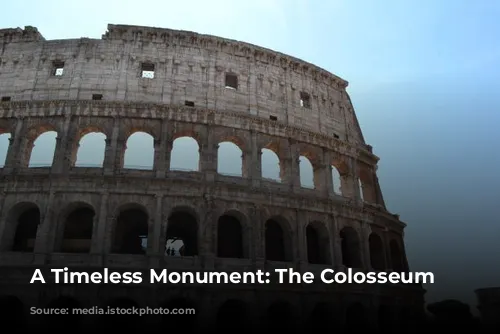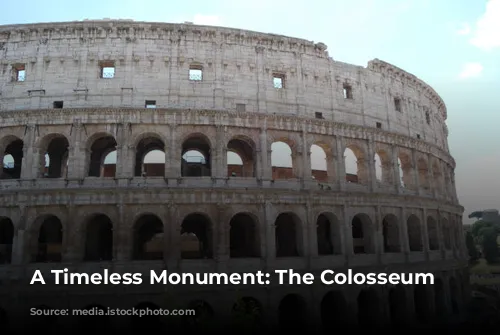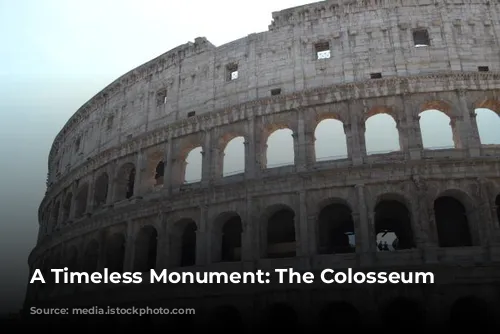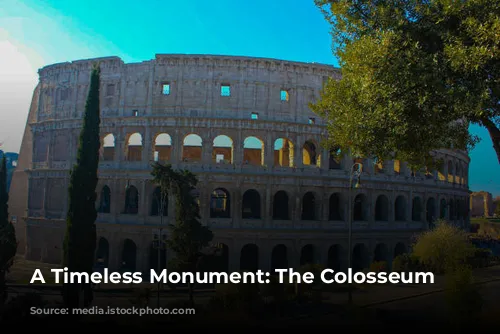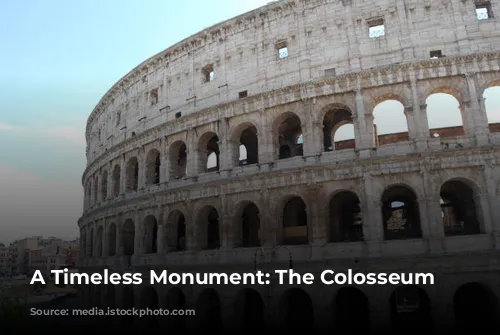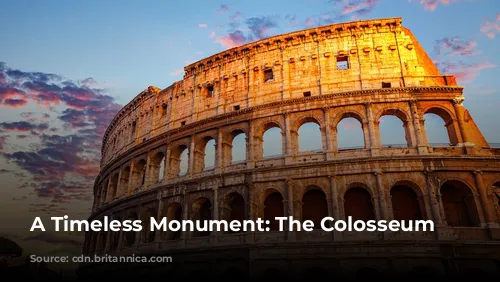The Colosseum, one of the few largely intact structures from the Roman Empire, stands as a testament to ancient Rome’s remarkable architectural and engineering skills. It’s not just a historical marvel, but also a significant contributor to the Italian government’s tourism revenue. In 2018, the Colosseum, Roman Forum, and Palatine Hill together generated over $63.3 million (€53.8 million), making it the top tourist attraction in Italy.
Wow! That’s a lot of money. The Colosseum is a true money-maker for Italy!
A Journey Through Time: From Glory to Neglect
The Colosseum’s story is a fascinating mix of grandeur and decline. After the fall of the Western Roman Empire, this iconic landmark fell into a state of disrepair. During the 12th century, the Frangipane and Annibaldi families used it as a fortress, transforming its purpose entirely. The 15th century saw a different use – the Colosseum was repurposed as a quarry by Pope Alexander VI. For over a thousand years, this architectural wonder was neglected, slowly succumbing to the ravages of time. However, the 1990s saw the start of state-funded restoration efforts, breathing new life into this ancient giant.
It’s amazing to see how the Colosseum has been repurposed over time. What a contrast to its original purpose!
From Entertainment Venue to Architectural Masterpiece
The Colosseum’s construction was a grand project aimed at revitalizing Rome after the tumultuous year of the four emperors in 69 CE. Emperor Vespasian, inspired by other amphitheatres, envisioned it as a center for entertainment, hosting gladiatorial battles, animal hunts, and even mock naval battles.
A true symbol of Rome’s resurgence, the Colosseum was designed to bring people together for entertainment and excitement!

A Legacy of Power and Plunder
Construction began under the reign of Emperor Vespasian between 70 and 72 CE, and the finished structure was dedicated in 80 CE by his son and successor, Titus. The fourth story was added by Emperor Domitian in 82 CE. Interestingly, the Colosseum was funded by the spoils of war from Titus’s capture of Jerusalem in 70 CE. It was built by enslaved Jews from Judaea, a stark reminder of the era’s power dynamics.
The Colosseum’s story is intertwined with the Roman Empire’s conquests and its treatment of conquered people. It’s a sobering reminder of history’s complexities.
An Architectural Wonder: The Colosseum Unveiled
The Colosseum, also known as the Flavian Amphitheatre, is an elliptical structure built from stone, concrete, and tuff. It rises to four stories, measuring 620 by 513 feet (189 by 156 meters) and could hold up to 50,000 spectators. It was famously used for gladiatorial combat, showcasing the spectacle and brutality of Roman society.
Wow! Just imagine the size of the Colosseum and the crowds it could hold. A truly remarkable architectural feat!
The Colosseum’s Construction: A Symbol of Imperial Power
The Colosseum’s construction, begun sometime between 70 and 72 CE under Emperor Vespasian, was strategically placed east of the Palatine Hill, on the grounds of Nero’s Golden House. The palace’s artificial lake was drained, and the Colosseum was built in its place. This decision was both symbolic and practical. Vespasian, who had a relatively humble rise to power, replaced the tyrannical emperor’s private lake with a public amphitheater, showcasing his commitment to the Roman people.
A powerful statement! Vespasian replaced Nero’s luxury with a public space for entertainment. What a bold move!
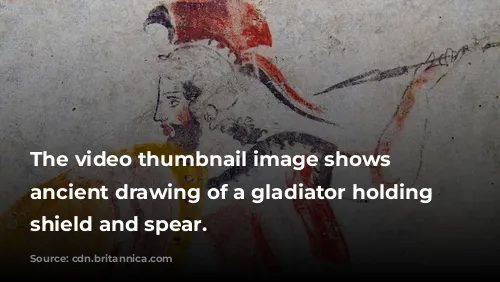
The Colosseum: A Masterpiece of Engineering and Architecture
The Colosseum was formally dedicated in 80 CE by Titus with 100 days of games. Domitian completed the structure by adding the topmost story in 82 CE. Unlike earlier amphitheatres, which were often built into hillsides for support, the Colosseum is a freestanding structure. It uses a complex system of barrel vaults and groin vaults and measures 620 by 513 feet (189 by 156 meters). Three of the arena’s stories are encircled by arcades, framed by columns in the Doric, Ionic, and Corinthian orders. The structure’s rising arrangement of columns became the basis for the Renaissance codification known as the assemblage of orders. Travertine forms the main structure and facade, volcanic tufa the secondary walls, and concrete the inner bowl and arcade vaults.
The Colosseum’s design and construction are impressive! It’s no wonder it stood the test of time. This architectural marvel truly reflects the genius of Roman engineering!
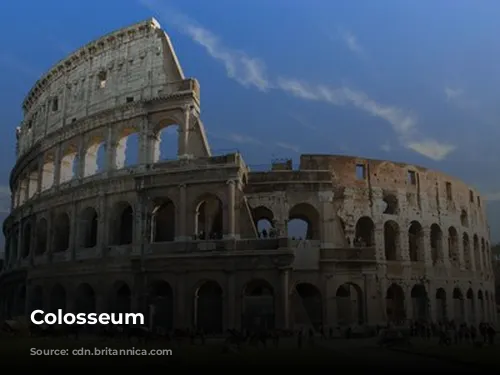
A Space for Spectacle: The Colosseum’s Entertainment
The amphitheatre could seat about 50,000 spectators, who were shielded from the sun by a massive retractable awning called a velarium. Supporting masts extended from corbels built into the Colosseum’s top story, and hundreds of Roman sailors were needed to manipulate the rigging. The Colosseum was a stage for gladiatorial battles, man-versus-animal contests, and even mock naval engagements. However, there’s no conclusive evidence to confirm if it was the site of early Christian martyrs.
Imagine the excitement of the crowds! The Colosseum was a place of grand spectacles and thrilling entertainment.
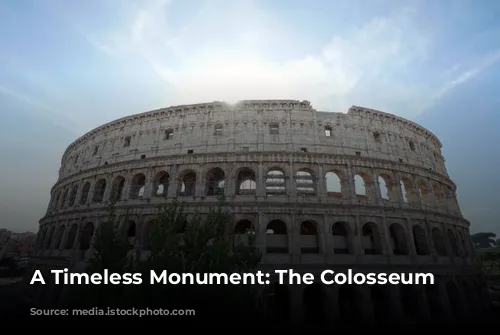
The Colosseum’s Transformation: From Glory to Preservation
In medieval times, the Colosseum was used as a church and then as a fortress by the Frangipane and Annibaldi families. It suffered damage from lightning, earthquakes, vandalism, and pollution. The marble seats and decorative materials were taken, turning it into a quarry for centuries. The 19th century saw the beginning of its preservation efforts, with notable contributions by Pius VIII. In the 1990s, a major restoration project was launched. Today, the Colosseum is a major tourist attraction, welcoming almost seven million visitors annually. Regular exhibitions showcasing ancient Roman culture are also held, keeping its story alive.
It’s heartwarming to see how the Colosseum has been brought back to life. It’s a testament to the enduring power of history and human effort.
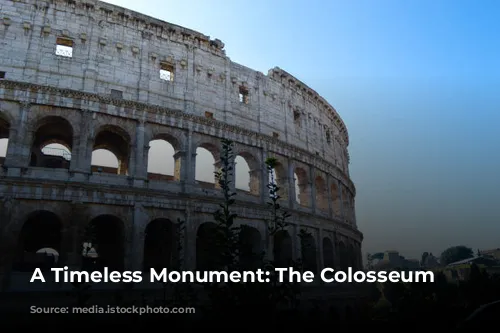
The Colosseum: A Legacy of History and Resilience
The Colosseum, an architectural marvel and a symbol of ancient Rome, is a reminder of both the grandeur and the fragility of human civilization. From its origins as an entertainment venue to its transformation into a fortress and a quarry, the Colosseum has endured the passage of time, offering a window into the past. Through restoration and preservation efforts, the Colosseum continues to captivate the imagination and remind us of the ingenuity and power of the Roman Empire. It’s a must-visit destination for anyone interested in history, architecture, and the enduring legacy of a great civilization.
The Colosseum is a symbol of history and resilience. It stands as a testament to the enduring power of human ingenuity and the captivating allure of the past.
